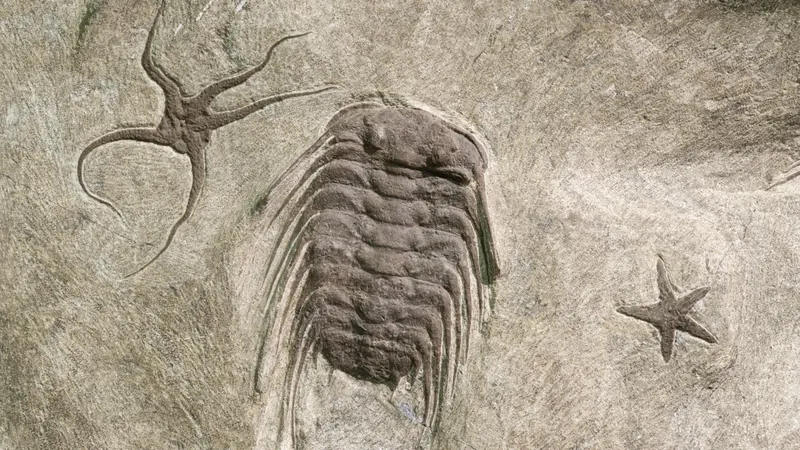
545-Million-Year-Old Fossils Reveal Shocking New Insights on Evolution
2025-06-27
Author: Jia
Ancient Trails Rewrite Evolution's Timeline
A groundbreaking study has emerged, diving deep into the secrets of our planet's ancient life. By examining 545-million-year-old fossil trails, researchers have unveiled stunning insights into the evolution of organisms on Earth, challenging long-held beliefs and potentially rewriting the history of life itself.
Unlocking the Past with Trace Fossils
The study, spearheaded by experts Olmo Miguez Salas from the University of Barcelona and Zekun Wang from the Natural History Museum in London, focused on trace fossils, which are preserved markings left behind by ancient creatures. These fossils provide a unique glimpse into the behaviors of both hard-shelled and soft-bodied organisms that thrived during the Cambrian explosion—a pivotal time in Earth's biological timeline.
"The trace fossil record is a treasure trove of information about periods dominated by softer life forms," explains Dr. Miguez Salas. "These fossils reflect the activities of organisms dictated by their environment, serving as indicators of the ecological conditions they experienced."
A Dynamic Transition in Biodiversity
The study specifically hones in on the transition from the Ediacaran to the Cambrian period—a time marked by drastic changes in biodiversity and ecosystem structures. While the Ediacaran was home to complex soft-bodied organisms, the Cambrian era brought about a rapid evolution of life forms with hard structures, leading to what we now call the Cambrian explosion. This transition was not merely a shift but a pivotal evolutionary leap.
Cambrian Explosion: An Earlier Phenomenon?
What’s particularly intriguing about this research is the suggestion that the Cambrian explosion may have started much earlier than previously thought. The findings published in the journal Geology indicate that slender-bodied organisms managed to thrive around 545 million years ago, displaying characteristics like muscle segmentation and the ability to navigate diverse environments.
"These early animals likely had enhanced mobility and sensory abilities, allowing them to thrive in the complex habitats of their time," Dr. Miguez Salas notes. This adaptability might have set the stage for profound evolutionary innovations.
A Methodological Revolution in Paleontology
The team utilized a novel methodology, applying scaling laws to analyze locomotion patterns in fossil traces. This innovative approach not only sheds light on ancient species' anatomy and behavior but also sets the groundwork for future studies of newly discovered Ediacara trace fossils.
Miguez Salas asserts, "This study opens exciting avenues for researching fossil locomotion, suggesting that key evolutionary events may have unfolded much earlier than we previously realized. It's a thrilling perspective that could reshape our understanding of ancient life and its development."



 Brasil (PT)
Brasil (PT)
 Canada (EN)
Canada (EN)
 Chile (ES)
Chile (ES)
 Česko (CS)
Česko (CS)
 대한민국 (KO)
대한민국 (KO)
 España (ES)
España (ES)
 France (FR)
France (FR)
 Hong Kong (EN)
Hong Kong (EN)
 Italia (IT)
Italia (IT)
 日本 (JA)
日本 (JA)
 Magyarország (HU)
Magyarország (HU)
 Norge (NO)
Norge (NO)
 Polska (PL)
Polska (PL)
 Schweiz (DE)
Schweiz (DE)
 Singapore (EN)
Singapore (EN)
 Sverige (SV)
Sverige (SV)
 Suomi (FI)
Suomi (FI)
 Türkiye (TR)
Türkiye (TR)
 الإمارات العربية المتحدة (AR)
الإمارات العربية المتحدة (AR)